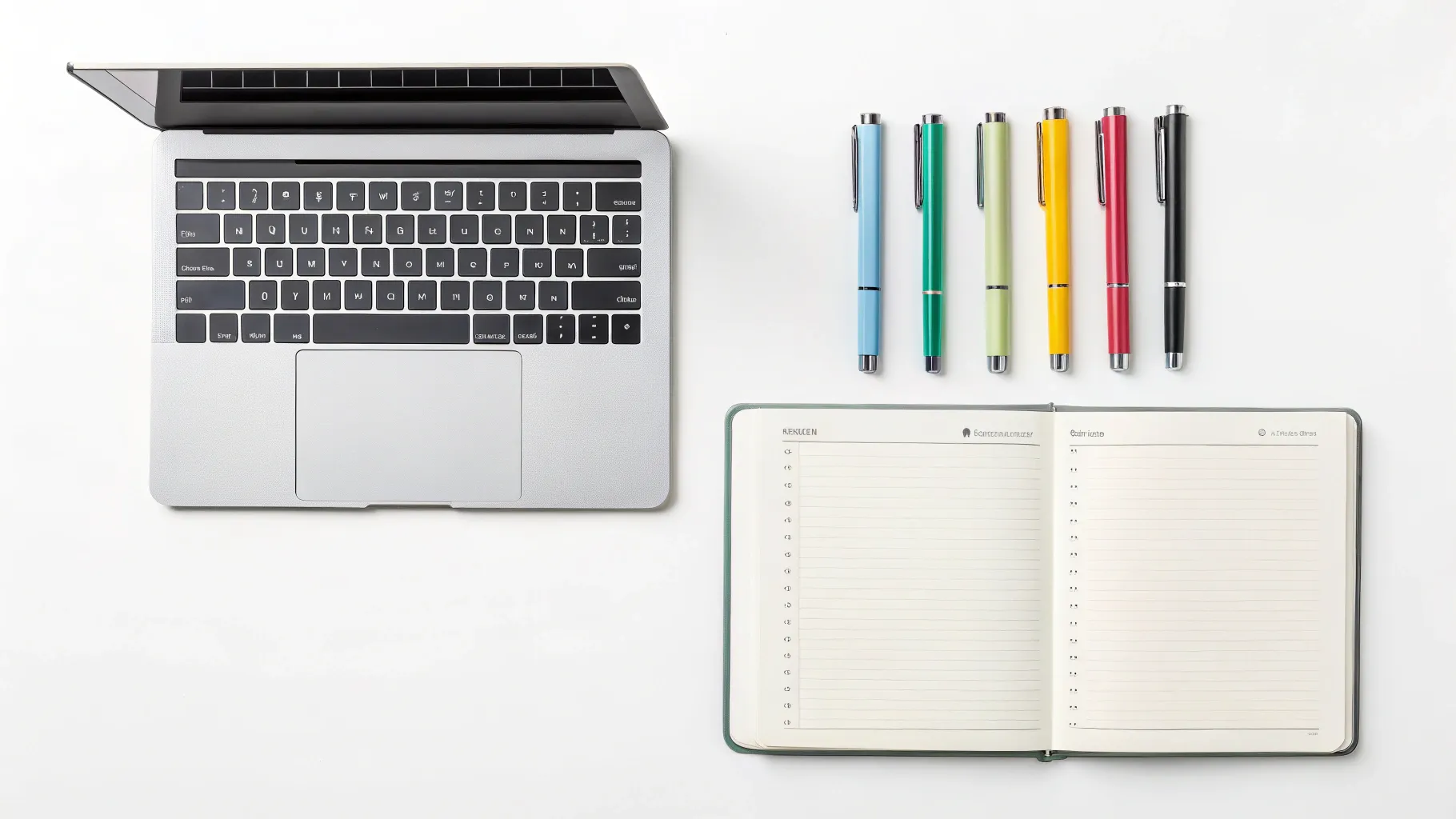

Take a second and think of the greatest pairings. I’m thinking PB&J, Batman & Robin — and hot dogs at a baseball game. Do you know what else goes together perfectly? Your Calendar and productivity . Seriously — try improving one without the other; it doesn’t work. Instead, try to improve any area in your life, and you will succeed if you build your calendar productivity goal.
With that being said, to get the most of each — here are 10 Calendar hacks for maximum productivity.
1. Book a problem-solving holiday.
“We all have things we need to do, create, and learn in order to build our dream business,” says brand strategist and digital products entrepreneur Taughnee Stone . “But we find it hard to find the time.”
It is easy to get things done if you apply the following formula;
Time x intense concentration focused on a single task.
When time is a problem (or an excuse), the key is to increase your focus, adds Taughnee.
What is the best way to do that? “Simpler said than done, but it requires clearing all distractions.” When we’re free from distractions, we can create real value — and that leads to authority, visibility, and profits,” she adds.
First, ask, “What’s that thing that you really need to learn and implement to move your business forward?” You’ll discover that these are big tasks that are difficult to accomplish if you’re “just dabbling” here and there when you’ve got time. And, if you’re like most of us, “free time” is often in short supply.
“The solution?” she asks. “Take a Problem-Solving Holiday.”
Your problem-solving holiday works like this;
- Set aside two to three days in your Calendar. Or, whatever it takes to make meaningful progress,
- Next, add an extra day. Why? Most of the time, we overestimate what we can do in specific timeframes.
- Lastly, make sure you focus on that thing you have decided to add to or change.
“Treat this problem-solving holiday like you would any vacation ,” Taughnee advises. “Let your clients know far in advance that you’ll be out of the office on those dates, work your deadlines around those days, and when the time comes, put your autoresponder on and do nothing but focus your attention on the problem you need to solve.”
Multitasking and social media are forbidden. So during your vacation, make sure you are “off the grid.”
2. Map out your Calendar for the entire year.
I know. Planning your entire year in advance ? That sounds like a monumental task. Besides, how can you really predict what will happen in the future?
While these are valid concerns and will take an initial time commitment, this could be the key to your calendar management.
Now, does this mean that you will be scheduling every minute of your time for the next 365 days? Of course not.
Instead, you’re adding the essentials. Examples would be quarterly meetings, birthdays, holidays, travel, vacations, industry events, and recurring priorities. Getting these into your Calendar prevents conflicts, reduces stress and anxiety, and ensures that you’re working on the right things at the right time.
3. Design your ideal week.
Now that you have your big picture items in your Calendar, you can scale things way back. And, that’s by designing your ideal week. Unlike mapping out your entire year, you can day this on a weekly basis. Personally, I prefer doing this on a Sunday .
“The idea is similar to a financial budget,” explains Michael Hyatt. “The only difference is that you plan how to spend your time rather than your money. And like a financial budget, you spend it on paper first.”
“I would live if I could control 100% of what happens,” suggests Hyatt. So instead, a simple grid organizes his schedule, and each day is assigned a theme that is “segmented according to a specific focus area.”
4. Keep your daily schedule simple.
There’s no need to make it complicated when it comes to your daily schedule. On the contrary, it’s best to keep your daily schedule simple.
For some, that could be only scheduling your top three priorities for the day. While this can be effective, this doesn’t consider several factors. For one, what if you identify the wrong priorities? Have you allocated the right amount of time for each item? Finally, what happens if you have a priority leftover that needs work?
Are you wondering how to achieve effective and efficient daily schedules? They’re not as complicated as that.
Take, for example, Benjamin Franklin’s daily schedule. While being open, straightforward, and structured, it also encourages routines.
Franklin’s schedule only included six blocks:
- Getting ready for the day: shower, breakfast, personal study, and prepare for work (3 hours)
- Morning work (4 hours)
- Review of current projects and to eat lunch (2 hours)
- Afternoon work (4 hours)
- Dinner and rest and wrapping up the day (4 hours)
- Sleep (7 hours)
That’s all there is to it.
If anyone wants a more productive day, they could use this template as a guide.
5. Sync your Calendar with your circadian rhythms.
“Humans have a well-defined internal clock that shapes our energy levels throughout the day: our circadian process, which is often referred to as a circadian rhythm because it tends to be very regular,’ writes Christopher Barnes on HBR . “If you’ve ever had jet lag, you know how persistent circadian rhythm s can be,” he emphasizes. “This natural — and hardwired — ebb and flow in our ability to feel alert or sleepy has important implications for” each of us.
What is the impact on your Calendar and productivity? As we plan our day, we need to consider our own circadian rhythms.
“The most important tasks should be conducted when people are at or near their peaks in alertness (within an hour or so of noon and 6 pm),” recommends Barnes. “The least important tasks should be scheduled for times when alertness is lower (very early in the morning, around 3 pm, and late at night).”
6. Assign names and scheduling events to downtime.
Many of us mistakenly believe that taking a break is nothing more than wasting time. I mean that 15 or 20-minutes could have been used to finish an important task. However, this is an outdated concept.
In reality, you can increase productivity by using your time management to take regular breaks throughout the day.
The key, though, is not to be vague. In other words, don’t just block out a 15-minute break every 90-minutes. Instead, schedule a scheduling event per day and decide how you will spend it in advance. Ideally, this would be based on your circadian rhythms.
By designating every break a particular name, such as “Wednesday a.m. break: 15-minute walk,” you can make sure it is used effectively. You may also toss your gym or walking shoes into the car after looking at your planner on Wednesday morning.
It is essential to avoid both the equal and opposite errors of;
- Overindulging in breaks
- Not taking a break at all
These two errors have had much scientific study done in the last decade. Don’t let your downtime slip by. Make the most of it within specific parameters, like setting a 15-minute timer. Above all, make it a priority like you would with an important meeting.
7. Stop trying to manage time.
While this may sound counterproductive, if not unconventional — you can’t actually manage time itself. As such, it’s futile to even try. Instead, you should be focusing on addressing what you have control over. You have control over yourself — now how will you make the best out of yourself? Work on these items:
- Energy . Instead of bulldogging through tasks, take a break if you’re drained. Every now and then, you might have to do this. But, constantly doing so will completely sap your energy reserves.
- Priorities. Before anything else, add your priorities to your Calendar. And, make sure that you attend to them first. You don’t want to waste your resources on tasks that could have been delegated, rescheduled, or deleted.
- Brain. “Neuroplasticity is the concept that the brain (even the adult brain) can build new pathways,” clarifies Ted Deshane over at the Enterprisers Project . “Each time you train your brain to eat the frog, it gets easier to do next time. That’s because you’re building a pathway and retraining your brain to do something that’s challenging.”
- What’s essential? In other words, focus on the vital few. This will keep your Calendar clutter-free while also keeping you fresh and energized.
- Focus . Try all you can — but you can only focus for so long. Try using the Pomodoro Technique or the 52/17 Rule so that you can recharge throughout the day.
- Emotions. Negative emotions can be both distracting and exhausting. Make sure that you fit time into your schedule for self-care or to have fun — both are essential to your well-being.
8. Make use of nudges.
To help motivate you, set a “calendar notification” ringtone of a soft beep or boop on your smartphone to alert you when it’s time to move onto the next block. You’re being nudged to stay on track without being scared to death or disrupting your current activities.
What if you’re using a paper calendar? No worries. If you want to be reminded to move onto the next block on your Calendar, set a phone timer or even an analog kitchen timer. The ding from a kitchen timer can be as effective as your phone notification.
9. Don’t fill in the gaps.
Throughout your Calendar planning and reviewing, you’ve probably noticed some blank spots. Well, that’s perfectly fine — within reason, of course. For example, if there’s a two-hour gap between tasks, you might want to reevaluate your Calendar. But, if there are 30-minute between meetings, leave it alone?
Some might argue that this is wasting time — just like breaks. The truth is, you can use this block of time as buffers between meetings to avoid running late or preparing for the next meeting. It can also be used to reflect upon the events of the day, meditate, stretch, and reconnect. You can also use it for unexpected, last-minute tasks or emergencies.
10. Don’t fall into the calendar-default trap.
“Whoever invented the one-hour default in calendar software wasted millions of people-hours,” writes Jeff Haden in an Inc.com article . There is no doubt about it. As a result, many meetings aren’t effective and are even despised because of their length.
“Most subjects can be handled in 30 minutes,” adds Haden. In addition, most meetings “can be handled in 15 minutes–especially if everyone who attends knows the meeting is only going to last 15 minutes.”
“Don’t be a slave to calendar tool defaults,” he counsels. “Only schedule an hour if you absolutely know you need it.”
Image Credit: Vlada Karpovich; Pexels; Thank you!











John Rampton
John’s goal in life is to make people’s lives much more productive. Upping productivity allows us to spend more time doing the things we enjoy most. John was recently recognized by Entrepreneur Magazine as being one of the top marketers in the World. John is co-founder and CEO of Calendar.